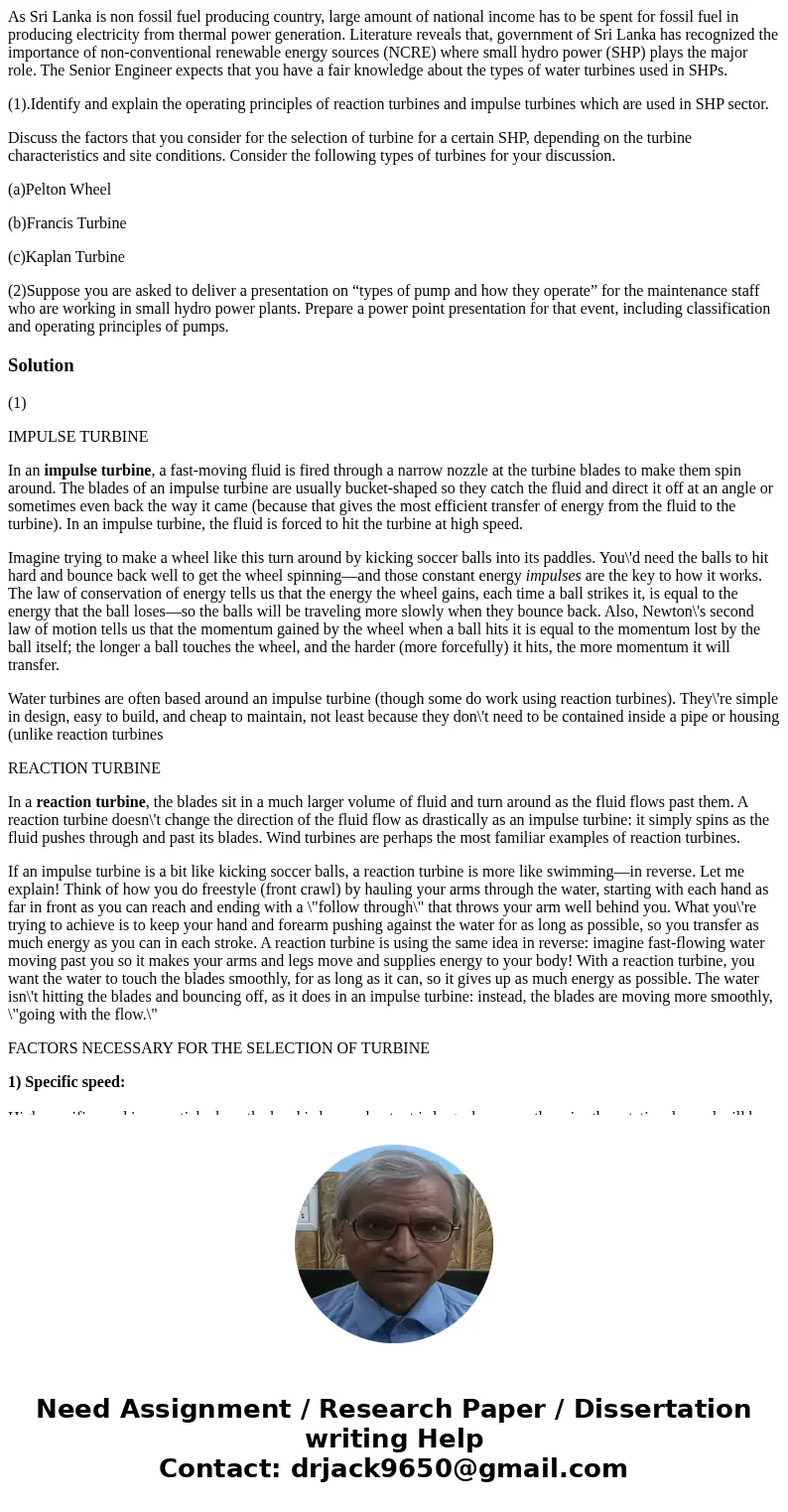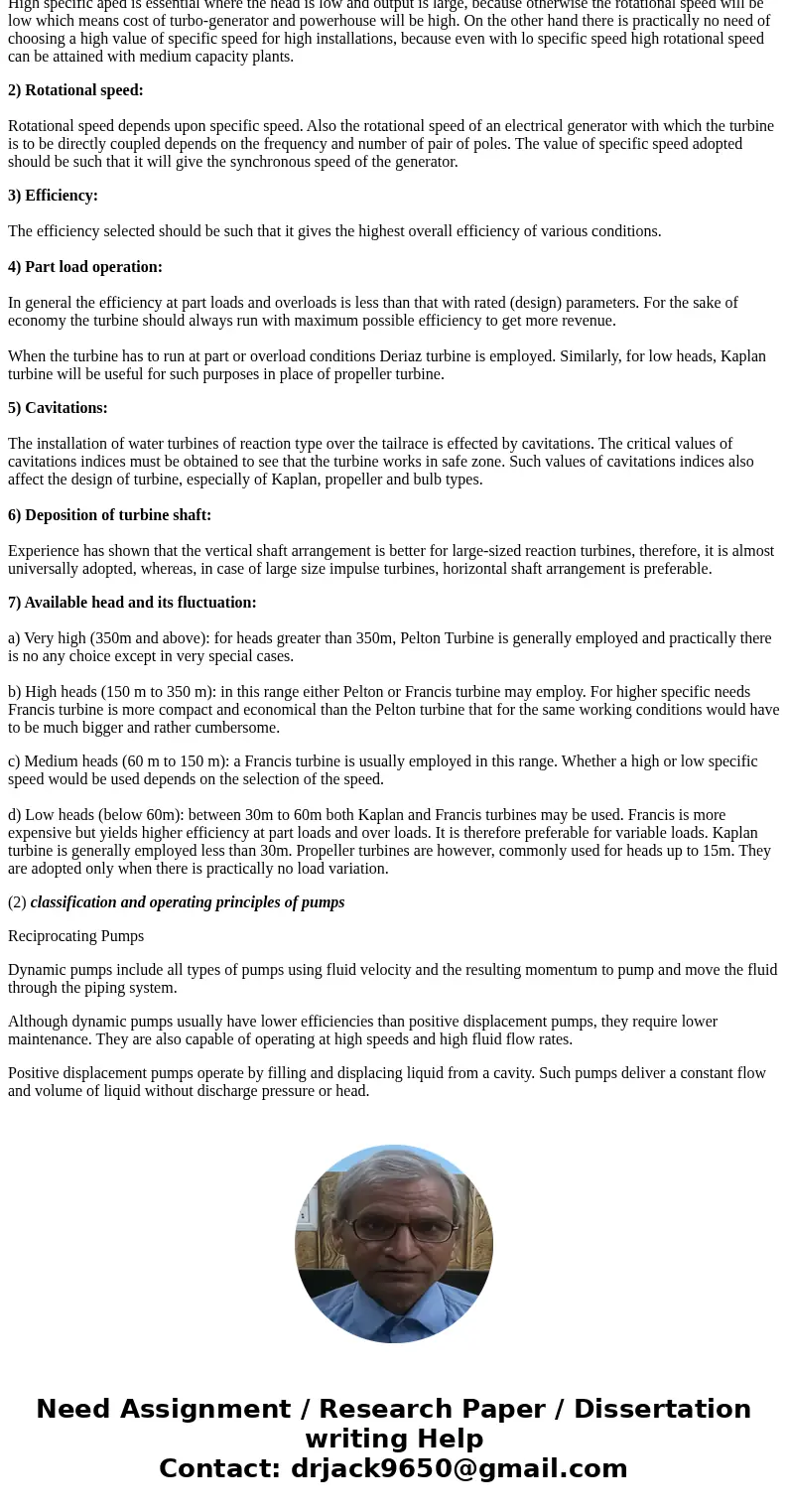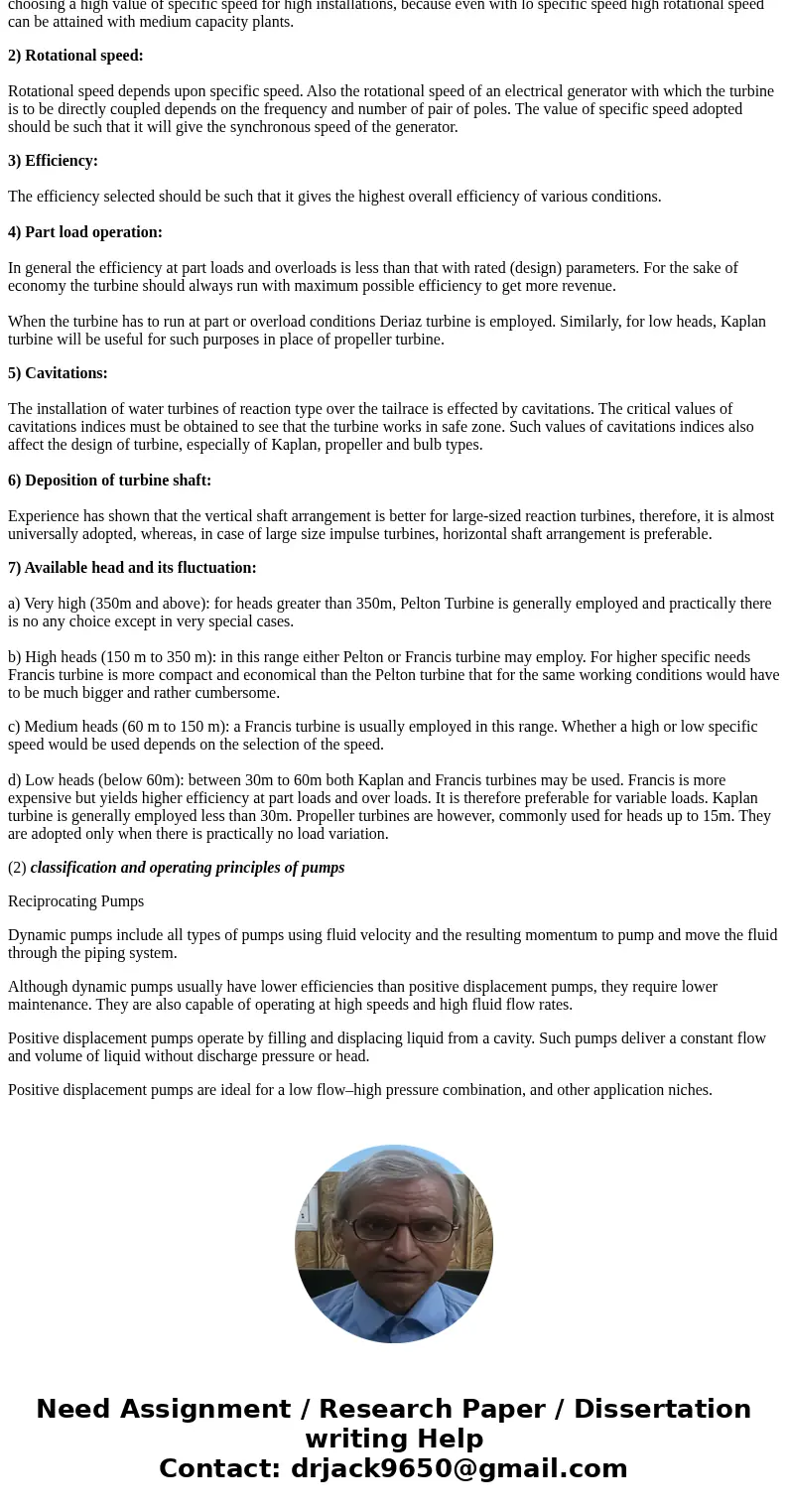As Sri Lanka is non fossil fuel producing country large amou
As Sri Lanka is non fossil fuel producing country, large amount of national income has to be spent for fossil fuel in producing electricity from thermal power generation. Literature reveals that, government of Sri Lanka has recognized the importance of non-conventional renewable energy sources (NCRE) where small hydro power (SHP) plays the major role. The Senior Engineer expects that you have a fair knowledge about the types of water turbines used in SHPs.
(1).Identify and explain the operating principles of reaction turbines and impulse turbines which are used in SHP sector.
Discuss the factors that you consider for the selection of turbine for a certain SHP, depending on the turbine characteristics and site conditions. Consider the following types of turbines for your discussion.
(a)Pelton Wheel
(b)Francis Turbine
(c)Kaplan Turbine
(2)Suppose you are asked to deliver a presentation on “types of pump and how they operate” for the maintenance staff who are working in small hydro power plants. Prepare a power point presentation for that event, including classification and operating principles of pumps.
Solution
(1)
IMPULSE TURBINE
In an impulse turbine, a fast-moving fluid is fired through a narrow nozzle at the turbine blades to make them spin around. The blades of an impulse turbine are usually bucket-shaped so they catch the fluid and direct it off at an angle or sometimes even back the way it came (because that gives the most efficient transfer of energy from the fluid to the turbine). In an impulse turbine, the fluid is forced to hit the turbine at high speed.
Imagine trying to make a wheel like this turn around by kicking soccer balls into its paddles. You\'d need the balls to hit hard and bounce back well to get the wheel spinning—and those constant energy impulses are the key to how it works. The law of conservation of energy tells us that the energy the wheel gains, each time a ball strikes it, is equal to the energy that the ball loses—so the balls will be traveling more slowly when they bounce back. Also, Newton\'s second law of motion tells us that the momentum gained by the wheel when a ball hits it is equal to the momentum lost by the ball itself; the longer a ball touches the wheel, and the harder (more forcefully) it hits, the more momentum it will transfer.
Water turbines are often based around an impulse turbine (though some do work using reaction turbines). They\'re simple in design, easy to build, and cheap to maintain, not least because they don\'t need to be contained inside a pipe or housing (unlike reaction turbines
REACTION TURBINE
In a reaction turbine, the blades sit in a much larger volume of fluid and turn around as the fluid flows past them. A reaction turbine doesn\'t change the direction of the fluid flow as drastically as an impulse turbine: it simply spins as the fluid pushes through and past its blades. Wind turbines are perhaps the most familiar examples of reaction turbines.
If an impulse turbine is a bit like kicking soccer balls, a reaction turbine is more like swimming—in reverse. Let me explain! Think of how you do freestyle (front crawl) by hauling your arms through the water, starting with each hand as far in front as you can reach and ending with a \"follow through\" that throws your arm well behind you. What you\'re trying to achieve is to keep your hand and forearm pushing against the water for as long as possible, so you transfer as much energy as you can in each stroke. A reaction turbine is using the same idea in reverse: imagine fast-flowing water moving past you so it makes your arms and legs move and supplies energy to your body! With a reaction turbine, you want the water to touch the blades smoothly, for as long as it can, so it gives up as much energy as possible. The water isn\'t hitting the blades and bouncing off, as it does in an impulse turbine: instead, the blades are moving more smoothly, \"going with the flow.\"
FACTORS NECESSARY FOR THE SELECTION OF TURBINE
1) Specific speed:
High specific aped is essential where the head is low and output is large, because otherwise the rotational speed will be low which means cost of turbo-generator and powerhouse will be high. On the other hand there is practically no need of choosing a high value of specific speed for high installations, because even with lo specific speed high rotational speed can be attained with medium capacity plants.
2) Rotational speed:
Rotational speed depends upon specific speed. Also the rotational speed of an electrical generator with which the turbine is to be directly coupled depends on the frequency and number of pair of poles. The value of specific speed adopted should be such that it will give the synchronous speed of the generator.
3) Efficiency:
The efficiency selected should be such that it gives the highest overall efficiency of various conditions.
4) Part load operation:
In general the efficiency at part loads and overloads is less than that with rated (design) parameters. For the sake of economy the turbine should always run with maximum possible efficiency to get more revenue.
When the turbine has to run at part or overload conditions Deriaz turbine is employed. Similarly, for low heads, Kaplan turbine will be useful for such purposes in place of propeller turbine.
5) Cavitations:
The installation of water turbines of reaction type over the tailrace is effected by cavitations. The critical values of cavitations indices must be obtained to see that the turbine works in safe zone. Such values of cavitations indices also affect the design of turbine, especially of Kaplan, propeller and bulb types.
6) Deposition of turbine shaft:
Experience has shown that the vertical shaft arrangement is better for large-sized reaction turbines, therefore, it is almost universally adopted, whereas, in case of large size impulse turbines, horizontal shaft arrangement is preferable.
7) Available head and its fluctuation:
a) Very high (350m and above): for heads greater than 350m, Pelton Turbine is generally employed and practically there is no any choice except in very special cases.
b) High heads (150 m to 350 m): in this range either Pelton or Francis turbine may employ. For higher specific needs Francis turbine is more compact and economical than the Pelton turbine that for the same working conditions would have to be much bigger and rather cumbersome.
c) Medium heads (60 m to 150 m): a Francis turbine is usually employed in this range. Whether a high or low specific speed would be used depends on the selection of the speed.
d) Low heads (below 60m): between 30m to 60m both Kaplan and Francis turbines may be used. Francis is more expensive but yields higher efficiency at part loads and over loads. It is therefore preferable for variable loads. Kaplan turbine is generally employed less than 30m. Propeller turbines are however, commonly used for heads up to 15m. They are adopted only when there is practically no load variation.
(2) classification and operating principles of pumps
Reciprocating Pumps
Dynamic pumps include all types of pumps using fluid velocity and the resulting momentum to pump and move the fluid through the piping system.
Although dynamic pumps usually have lower efficiencies than positive displacement pumps, they require lower maintenance. They are also capable of operating at high speeds and high fluid flow rates.
Positive displacement pumps operate by filling and displacing liquid from a cavity. Such pumps deliver a constant flow and volume of liquid without discharge pressure or head.
Positive displacement pumps are ideal for a low flow–high pressure combination, and other application niches.



 Homework Sourse
Homework Sourse